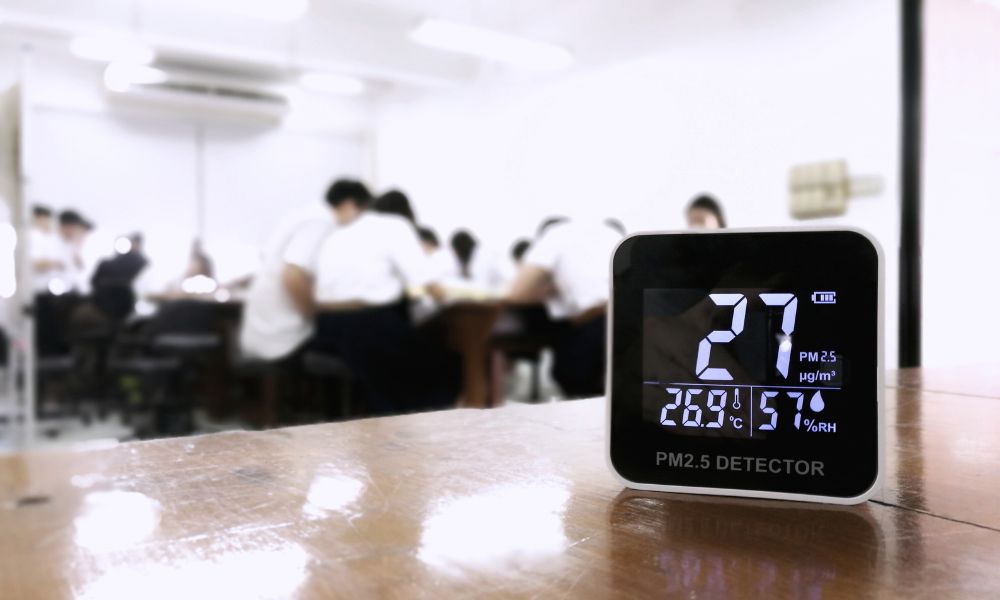Environmental sensors are revolutionizing contemporary classrooms, transforming them into optimal learning environments. With environmental sensing technology, schools can monitor real-time data on various environmental parameters such as temperature, humidity, and air quality. These factors are often overlooked, but they play a significant role in shaping learning spaces and influencing those that occupy these spaces, from the teachers to the students. Explore the importance of environmental sensors in classrooms and discover how this technology reshapes educational experiences and students’ well-being.
Monitoring Air Quality
Poor air quality can lead to a myriad of health issues, such as respiratory problems and germ exposure. Certain toxins and pollutants in the air, like carbon dioxide, VOCs, and particulate matter, can also negatively impact cognitive functioning, affecting students’ focus, decision-making skills, and fatigue.
Environmental sensors allow schools to better monitor air quality in classrooms and ensure the air students breathe is clean and safe, which contributes to their overall health and academic performance. The sensors enable schools to quickly act on any air quality concerns and keep classrooms a safer space for students and teachers.
Managing Humidity
Excessive humidity leads to multiple issues, including discomfort, mold growth, and poor indoor air quality. High humidity also promotes bacteria growth, as the damp and warm atmosphere creates perfect culturing conditions. Low humidity, on the other hand, causes dryness and irritation, especially for those with sensitive skin.
Maintaining neutral humidity levels creates a more comfortable and healthier environment. Classroom environmental sensors allow schools to manage humidity levels and provide students and teachers with a conducive space and conditions that enhance comfort, productivity, and safety.
Controlling Classroom Temperature
Room temperature directly correlates to learning efficiency. A classroom that’s too hot or too cold can distract students and hinder their learning. Warm, hot, and humid environments can make students feel sleepy and uncomfortable, as well as increase risks of dehydration and overheating. Cold and freezing temperatures also generate uncomfortable conditions and increase the likelihood of illnesses spreading, as the cold decreases the efficiency of the body’s immune system. With environmental sensors, schools can monitor classroom temperatures and automatically adjust them for maximum comfort and productivity.
Environmental sensors in classrooms are important for many reasons. Their benefits extend beyond immediate comfort, positively affecting students’ long-term health and academic success. A well-monitored and moderated classroom can significantly enhance students’ cognitive abilities, concentration levels, overall academic performance, and well-being. The incorporation of environmental sensors into classrooms manifests the intersection of technology and education, emphasizing their importance in molding the future of academic spaces.
Find the perfect classroom environmental sensor for building and ventilation technologies with Precision Measurement Technologies, your go-to electronic components distributor. We offer the best technology solutions for many different applications.

